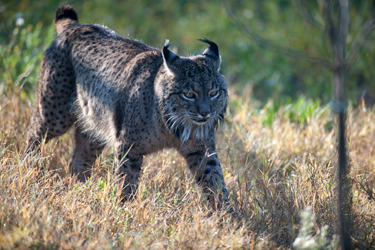After six decades of decline and pronounced range contraction, between 2002 and 2012 population size of the Iberian Lynx has continuously increased from 52 to 156 mature individuals in the two remaining wild populations. Likewise the area of occupancy experienced a three-fold increase to reach 1,040 km2. One subpopulation contains 68% of all mature individuals. In 2012 twelve mature individuals survived in two additional localities where reintroductions are currently under way. As a result of the increasing population size, the Iberian Lynx no longer qualifies for Critically Endangered status and is therefore listed as Endangered under criterion D. Detailed demographic projections suggest that future range expansion and population increase depend upon continued reintroductions. In the absence of reintroductions, a marked decline would quickly re-occur and extinction is predicted to occur within 35 years. Major future threats include uncertainty about the identity and intensity of environmental drivers on lynx prey in regions where conservation efforts are currently concentrated, and uncertainty about the suitability of these regions for lynx under future climate change. informacion[at]ebd.csic.es Rodríguez, A. & Calzada, J. 2015. Lynx pardinus. The IUCN Red List of Threatened Species. Version 2015.2 http://www.iucnredlist.org/details/12520/0
http://www.iucnredlist.org/details/12520/0

 Las altas temperaturas están provocando que las lagunas y las marismas de Doñana pierdan agua rápidamente
Las altas temperaturas están provocando que las lagunas y las marismas de Doñana pierdan agua rápidamente




